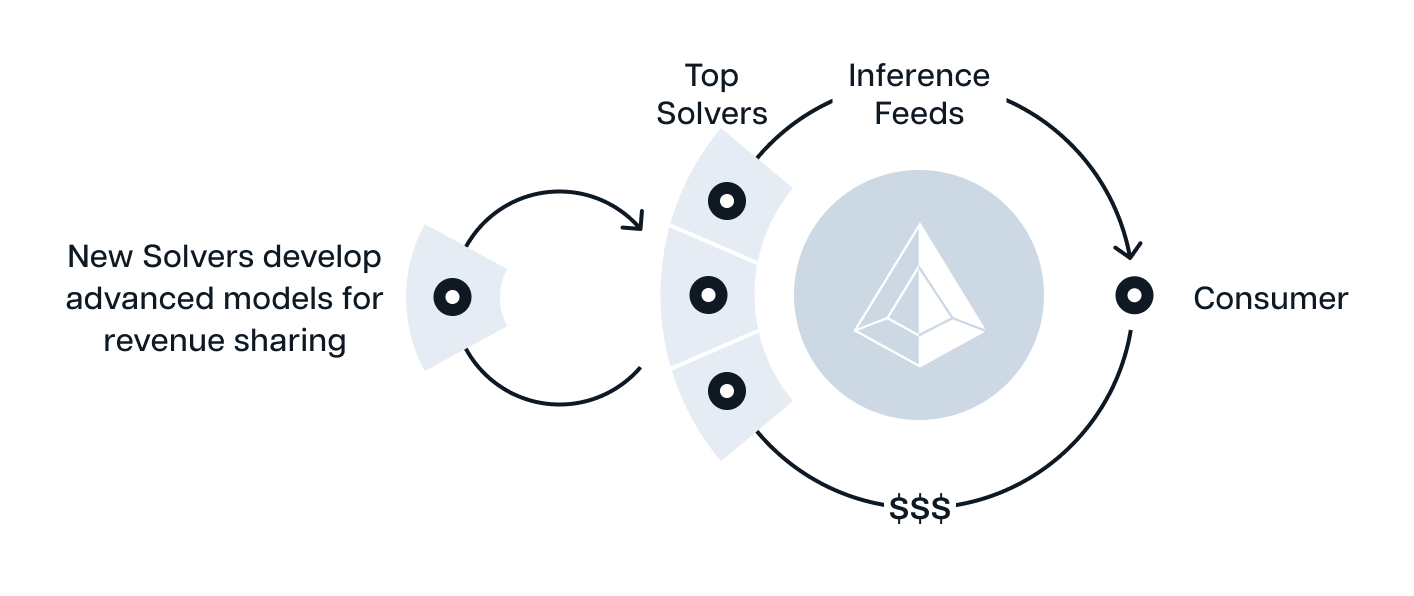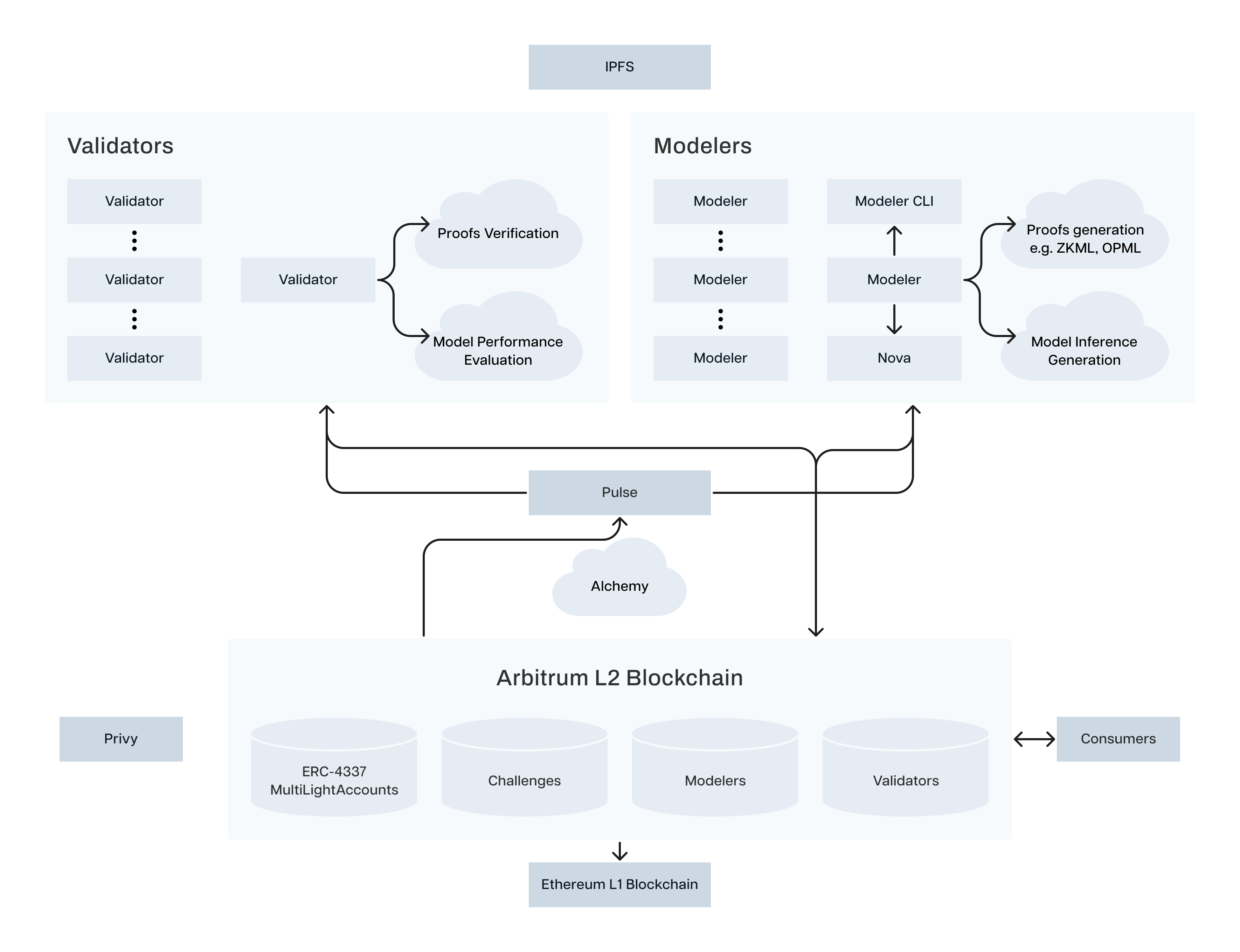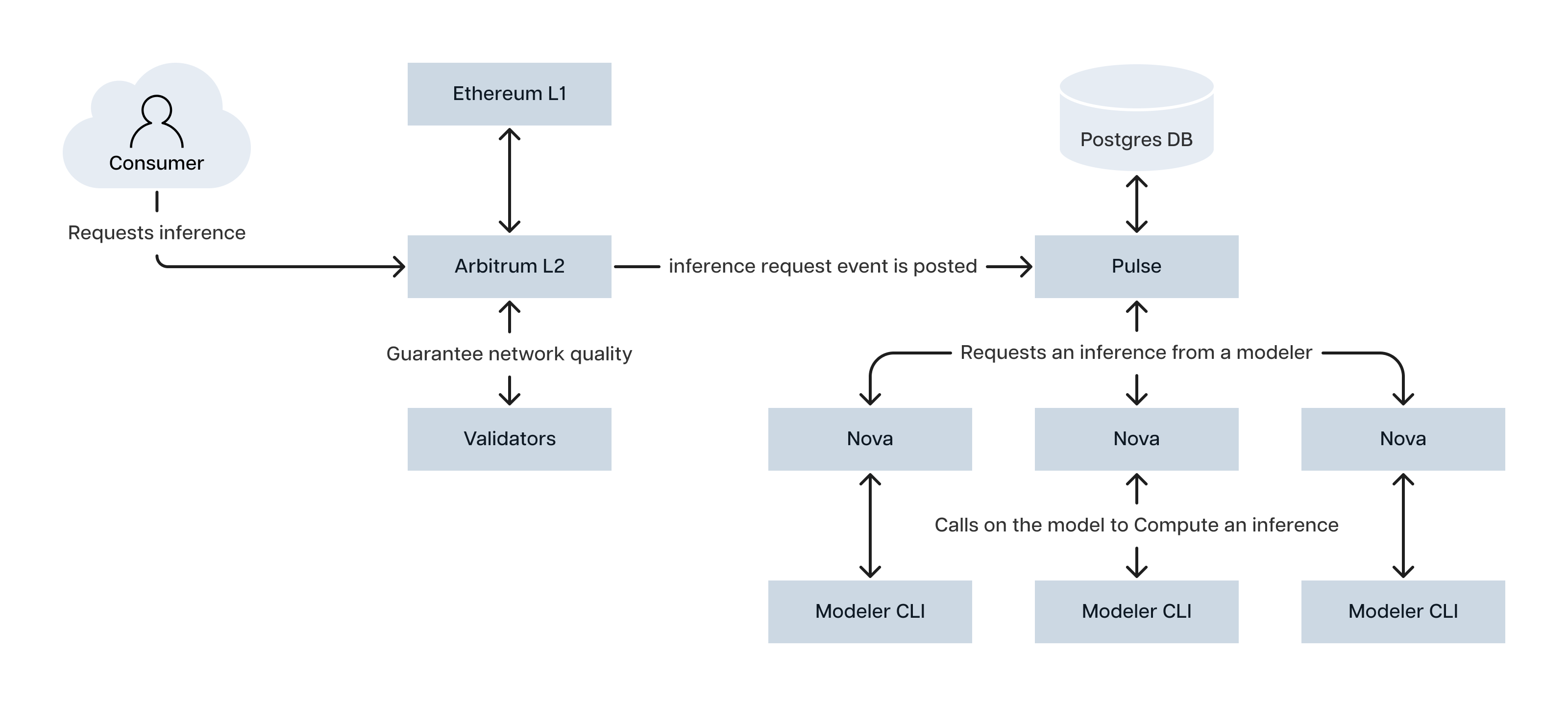A. Overview of the SPEC Token
The Spectral Network incorporates the SPEC token as an ERC20 standard, aligning it with Ethereum's ERC20 protocol for seamless compatibility across wallets, exchanges, and decentralized applications. This token assumes a pivotal role in the platform's onchain governance, providing holders with voting power and decision-making authority over crucial operational aspects.
In essence, SPEC operates as a governance token, enabling community stakeholders, including users building Agents on Spectral Syntax, as well as Solvers and Creators on Spectral Nova, to participate in the administration of the network. This inclusive approach ensures collective decision-making, mitigating the influence of centralized entities.
The onchain governance facilitated by SPEC allows holders to propose and vote on platform upgrades, modifications, and parameter adjustments. This democratic process fosters community consensus, enhancing transparency and inclusivity in decision-making.
Beyond its governance function, SPEC is integral to the staking mechanisms within the Network.
- On Spectral Syntax, users who stake SPEC are entitled to elevated rights for Agent creation and monetization, and the staking requirement ensures that purposeful Agents get created on the Network and disincentivizes any actor to create malicious Agents.
-
On Spectral Nova, Validators, essential for validating Solvers' submissions and maintaining challenge integrity, are mandated to stake SPEC as collateral. This requirement incentivizes validators to act with integrity, as any misbehavior or malicious actions may result in the forfeiture of their staked tokens.
Additionally, SPEC serves as a medium of exchange and value transfer within the platform.
-
On Spectral Syntax, users are required to pay for using the community Agents; additionally, some Agents (such as trading Agents) incur Spectral platform usage fees for helping users with their transactions. Such users can pay for Agent interactions through SPEC, and be entitled to receive faster transaction processing, discounted platform fees, special access to Agents reserved for SPEC holders, etc. Paying for Agents through SPEC thus enables the users to use the platform and deploy onchain Agents in a more rewarding manner. Similarly, users are also incentivized to build their own Agents and monetize them using SPEC. Staking SPEC allows such users to get broader access for monetizing their Agents, along with unlimited cap to create Agents and registering them in the official Agent naming service and verification program.
- On Spectral Nova, users accessing machine learning models are required to pay fees, which can be in the form of Ethereum (ETH) or stablecoins, depending on challenge rules. A portion of these fees is allocated as rewards to Solvers, fostering active participation and encouraging high-quality contributions to the Spectral ecosystem. This multifaceted role of SPEC underscores its significance in both the governance and operational dynamics of the Spectral network.
B. Governance
SPEC token serves as a powerful mechanism for actors in the system to actively participate in the governance of the Decentralized Autonomous Organization
-
Voting on Network Improvement Proposals: SPEC token holders can actively participate in the governance process by submitting and voting on proposals related to network upgrades, feature implementations, fee structures, and standardized challenge rules. While proposing proposals and voting on them, the DAO shall follow the following guidelines:
-
Voting power is proportional to the amount of SPEC held by a user.
-
There is a designated voting period for each proposal.
-
Token holders express support or opposition during the voting period.
-
Votes can be cast directly or delegated to other addresses.
-
Delegating voting power promotes broader participation.
-
A proposal must meet a minimum quorum requirement to be valid.
-
Approval requirement is typically 40% of total votes for a successful proposal.
-
If a proposal meets both the quorum and approval requirements, it is considered successful. The proposed changes are then implemented in the protocol according to the terms outlined in the proposal.
- Influencing Governance Parameters: Token holders have the ability to propose and vote on adjustments to governance parameters, including voting rules, quorum thresholds, and voting periods, contributing to the agility and responsiveness of the platform's governance model.
- Staking for Agent Operations: On Spectral Syntax, staking gives users privileged access for monetizing the Agent network. To that end, SPEC holders can use their tokens to influence the manners in which Spectral monetizes the Agent network, and propose platform fee changes, suggest strategic partnerships, modify content moderation rules, etc.
- Staking for Validation: On Spectral Nova, Validators stake SPEC tokens as collateral to play a critical role in maintaining the integrity of machine learning challenges on Spectral. They are responsible for validating submissions made by participating Solvers and are rewarded for their honest and accurate assessments.
- Participating in Smart Contract Upgrades: Through DAO governance, SPEC token holders can vote on proposed changes to Spectral's smart contracts. This allows for the platform's flexibility and adaptability to emerging technologies and security enhancements.
- Allocating Funds for Community Initiatives: The DAO may allocate a portion of the platform's funds to support community-driven initiatives, research and development, marketing efforts, or partnerships. This mechanism empowers the community to drive initiatives that benefit the platform as a whole.
- Shaping the Future of Spectral: Overall, holding SPEC tokens grants individuals the opportunity to actively shape the future of the Spectral Network by participating in various governance activities, ensuring a transparent and inclusive decision-making process.
C. Staking on Spectral Syntax
Users of the Spectral Syntax network can stake SPEC in various ways, depending on their use case and utility for the token:
- For Agent consumption: Users can choose to stake SPEC in order to obtain privileged access for interacting with Agents in the Syntax network. A user could expect to pay lower platform fees, obtain faster transaction processing and get access to a reserved set of Agents meant only for users actively staking SPEC.
- For Agent monetization: Users can also choose to stake SPEC to get privileged rights for monetizing their Agents. Monetizing your Agent will require staking SPEC, but the system is geared to incentivize users who are willing to stake more SPEC and safeguard the authenticity of the network. Hence, users are enabled to create and monetize Agents in proportion to their staked SPEC. Additionally, staking SPEC also allows users to get their Agents “verified” through Spectral’s official onchain naming and verification service.
D. Staking on Spectral Nova
Actors within the Spectral Nova network can stake SPEC in different ways, depending on their use case and utility for the token:
- For Solvers: In the Spectral Nova Network, Solvers play a crucial role by participating in machine learning challenges. To enter a challenge, Solvers are required to stake SPEC tokens, showcasing their commitment to delivering high-quality machine learning models. This staking requirement encourages Solvers to have "skin in the game" and fosters a sense of dedication to producing top-notch models. Solvers also have the option to pool funds through crowdfunding mechanisms, enabling collaborative efforts to meet the staking requirements collectively.
- For Validators: Validators in the Spectral Nova Network are responsible for maintaining the integrity of machine learning challenges. Validators stake SPEC tokens as collateral, demonstrating their commitment to the network's security. Their role involves validating Solvers' submissions and ensuring adherence to challenge guidelines. Validators face potential slashing if they fail to validate submissions within specified time windows or engage in malicious behavior. This staking mechanism incentivizes validators to act diligently and responsibly, contributing to the overall credibility of the network.
- For Consumers: Consumers accessing machine learning models within the Spectral Nova Network contribute to the ecosystem by paying fees for model usage. These fees, which can be in the form of SPEC, Ethereum (ETH) or stablecoin, are distributed to Solvers as rewards. Consumers also have the option to stake SPEC tokens, allowing them to receive discounts on network fees or even waive fees entirely. The staking of SPEC tokens by consumers aligns their interests with the success of the network, creating a mutually beneficial relationship between consumers and other participants.
Incentives for staking SPEC are also distinct for every actor as follows:
- Incentive for Solvers: For Solvers in the Spectral Nova Network, staking SPEC tokens serves as a commitment to challenges. Rewards are tied to the quality and performance of their machine learning models, and specific incentives are distributed during reward epochs. This approach ensures that top-performing Solvers and every benevolent Solver, regardless of ranking, are rewarded with SPEC tokens. The system encourages ongoing engagement and improvement, fostering a collaborative and inclusive environment within the network.
- Incentive for Validators: Validators in the Spectral Nova Network receive incentives for their active participation and commitment to the platform's security. They stake SPEC tokens as collateral and receive a portion of the revenue generated from users requesting inferences from Solvers. Validators also earn rewards for identifying and exposing malicious behavior, creating a self-regulating environment. In cases where a validator successfully challenges and uncovers misconduct, they are rewarded, reinforcing the network's security and trustworthiness.
- Incentive for Consumers: Consumers in the Spectral Nova Network can gain incentives by staking SPEC tokens, allowing them to receive discounts on network fees. This aligns consumer interests with the success of the network, creating a symbiotic relationship. The varying incentives for Solvers, validators, and consumers contribute to the overall health and sustainability of the Spectral ecosystem, fostering a balanced and mutually beneficial environment among its diverse participants.








